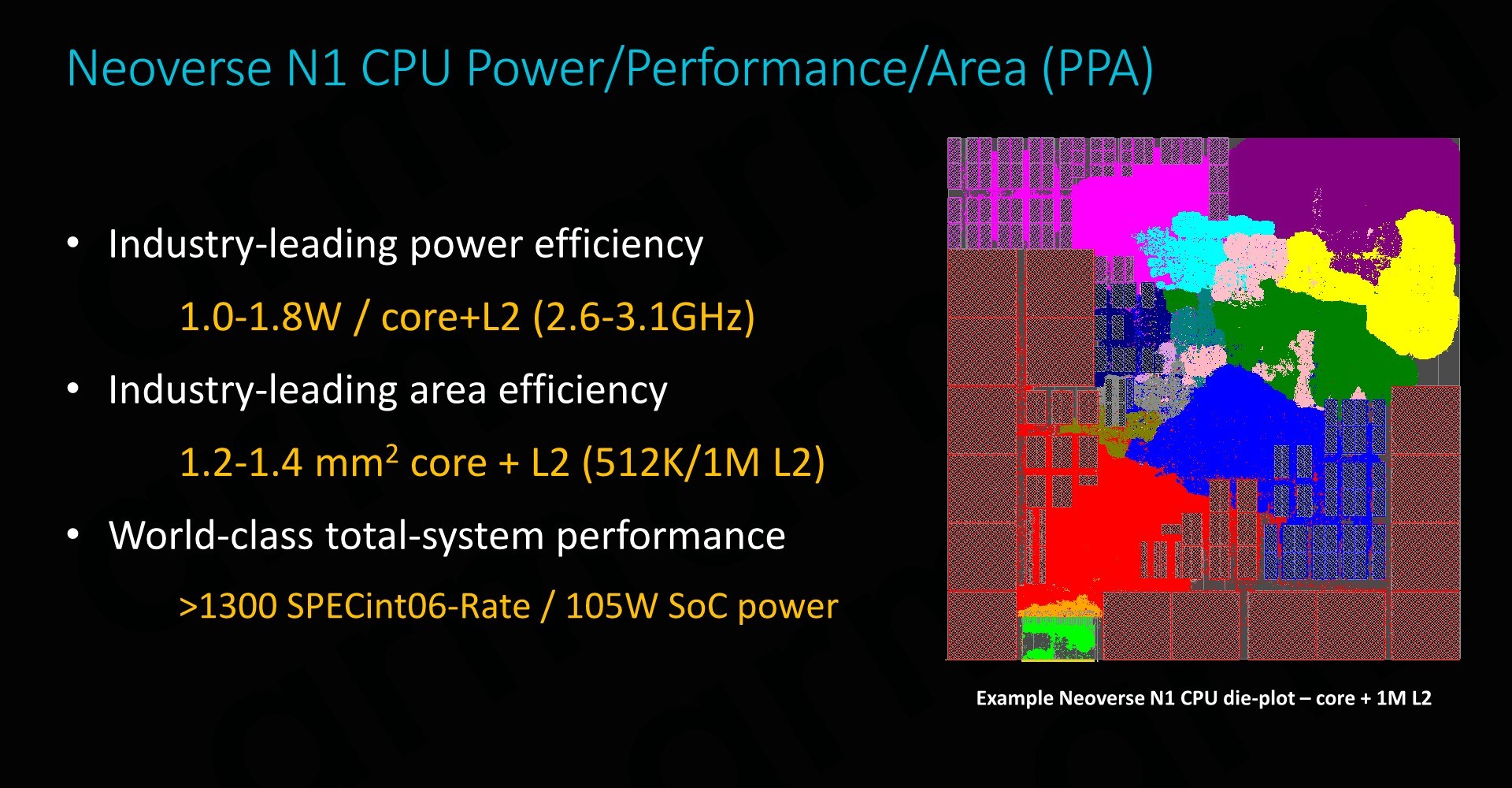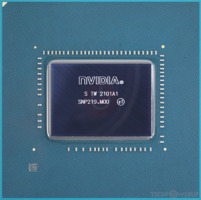MadMarvainy
Moblin
- Pronouns
- He/Him
- “…another claiming 4267 Mhz, though they didn’t specify if that’s docked or not.”
What the hell, dude. If it’s 4267 Mhz, then it’s ~8533 MT/s, which would clearly be docked. (8533 MT/s would also be LPDDR5X) And if he meant to say 4267 MT/s, then that’s obviously portable mode.
This guy does not understand the words coming out of his own mouth.
- “…512 GB eMMC”
I cannot find evidence of 512 GB eMMC existing.
This guy either does not verify input, or he doesn’t doublecheck the feasibility of his bullshit.
You are correct that the word “within” can mean “inside” of some subject. Example: the item resides within this container.But how does the word "within" work then? I have always understood the word "Within" similar to "Inside", not as a subtraction between numbers, but as a part of a total.
I mean, "within 15% of Series S" I understand it as 15% of the Series S power range.
Switch's storage drive is faster than PS4The part that's "comparable to ps4" is just the GPU (not counting DLSS/RT). The CPU will be significantly faster, and the SOC apparently has dedicated decompression hardware, and the system likely has much faster storage than the PS4's hard drive.
PS4 Pro's Polaris mixed precision is similar to Switch's Maxwell, right? Meaning it's normally 4 tflops, but games and engines that use FP16, it could theoretically have performance that is 50% above that (roughly) with fp16 and fp32 used at the same time.You’re exactly right but not all “architectural upgrades” make FLOPS more powerful.
The PS4 Pro is a 4 TFLOPS machine, and the architecture means all those flops can be effectively used all the time.
NG is a (possibly) 3 TFLOPS machine, but only half of them can be used effectively all the time. The other half are only available under certain conditions.
You can’t just compare flops and know roughly how two radically different architecture will perform against each other.
Wait what.. PS4 Pro's Polaris mixed precision is similar to Switch's Maxwell, right? Meaning it's normally 4 tflops, but games and engines that use FP16, it could theoretically have performance that is 50% above that (roughly) with fp16 and fp32 used at the same time.
Some really good technical posts explaining the difference between architectures if your into that.is it worth catching up today or is everything about salsa
Yep I know the original PS4, xbone based X bone X don't have mixed precision. Not sure why you hid that.* Hidden text: cannot be quoted. *
Also mixed precision on pro was often used up to checkerboard and that’s itYep I know the original PS4, xbone based X bone X don't have mixed precision. Not sure why you hid that.
I know that PS4 pro was only made to upres PS4 games and/or offer better framerate as well.
salsa is always worth catching up onis it worth catching up today or is everything about salsa
You can't get that from specs. It's a function of game designAre there any estimates to how much input latency to expect from NG compared to PS4/Pro for the same games?
Sorry Richard, but it's the only measure worth a damn
No and you can’t really get that, probably could use reflex if need be….? Atleast that’s my assumptionAre there any estimates to how much input latency to expect from NG compared to PS4/Pro for the same games?
I'd be more interested in the RAM sauceSalsa this salsa that but where the lamb sauce?
is it worth catching up today or is everything about salsa
The calculation error is in the number of cores.Is this being taken into account for the calculations done on this thread though?
The Tegra X1 GPU does 2x FP32 operations per clock, and so we calculate the Flops by:
2 (ops) x number of cores x clock (e.g. 2 x 256 x 768 = 393 GFlops docked)
I always assumed we were just counting the 2 guaranteed FP32 operations rather than counting the "fake flops" (and have to put huge disclaimers for those unaware), and therefore 2 ops per clock x 1536 cores x 1.1 GHz = 3.38 TF.
Is that not right? Or are you just using the RTX 30 as the prime example of why flop comparisons between different architectures is so flawed?
Yeah the first thing I did when I heard this was supposedly information from Capcom's IR presentation was read the actual presentation and transcripts only to find, "shocked", that yes, the quote no one could exactly point to seemed to not actually exist. Which definitely made me quite suspicious of the entire thing.Coming out of my self-imposed ban to do a quick post. If any of the below had already been shared (I only check this thread sporadically), sorry for the duplication.
Thank you. Finally someone else noticed. This Mochizuki tweet is the one (1) single source of all subsequent re-reports of a Capcom “unannounced game, which would sell millions, by March next year”. It was never corroborated by the primary source or any other major news outlets (content aggregators are hardly news organizations).
This joins a long list of other gaming facts for which Mochizuki was the one (1) single source: Sharp was making an LCD panel for Switch 2, Nintendo’s FY03/24 forecast did not include any new hardware, PS5 broke even in 2021, Furukawa said Switch in mid lifecycle in 2022, Nikkei predicted Nintendo wouldn’t release a new model in FY02/23 (which came true but Nikkei did not predict that), Furukawa “declined to comment” on the next-gen in 2022, and Hosiden “withdrawn” FY forecast due to Switch production difficulties, just off the top of my head.
Speaking of the conspicuous missing Capcom game, in today’s Nikkei article regarding the Tokyo Game Show:
Why would they do thisThe Switch 2 will take care of that, thanks to dlss all it really needs to do is hit 768p (it's a 4:3 screen probably, same size and manufacturer as the old iPad mini Retina. No way are they making a surfboard of a device with an 8 inch 16:9 screen, where the action in the center is half the size, just to accommodate dead space left and right that no one looks at but needs to be rendered. The iPad mini is tiny and this would leave room for a smaller lite version down the line, with a screen that's the same height as the current 7 inch oled.) in handheld and 1080p docked and they have fixed the most perceptible problem of mushy resolution that everyone notices. Worst case it could do 720p for Impossible 3rd party games and it would still look decent dlss'd to FHD or 4K. The GPU is good enough to enable ports with good graphics, unlike some of the Switch ports.
Haven't read the last 3 pages (thread is still moving fast) but I'm wondering about what kind of performance we can expect in some PS4 titles that could be ported to Switch NG.
Let's take FFVII Remake as it's a game I love and it's been rumored as an upcoming port.
Is it reasonable to expect a 60fps port of this game?
It's always been capped at 30fps even on PS4 Pro, but considering NG's much better/modern CPU and DLSS to save performance, I feel like it's something that could be done without much compromises on visual fidelity and/or final resolution.
It would make it comparable to the PS5 version at first glance, yes.
Of course it's hypothetical as we don't know if the game will be ported, and there may be better examples out there, but in my opinion it's a great way to know what we can reasonably expect on this console; concrete examples with PS4 games that could run with same or even better performance.
I could ask the same thing about Death Stranding for instance, though I'd be more cautious with this one as it's an open world game so I'm not expecting more than 30fps.
So right now, customization makes everything a bit of a mystery, but there isn't some immediate console-ready ARM CPU that Microsoft would have been able to use that would have given them that much of a benefit of switching to Arm. However, its basically impossible at this point to know what will happen in 2028. Interesting to see how much room Zen has to be optimized though, I do wonder if Zen6 will just end up being good enough that Microsoft won't feel the need to deal with all the possible road blocks of switching to ARM just for a smaller performance boost, quite yet at least.But is this the original ass scratching/wall staring experience, or the NG+ version?
I can't do a full wall of text yet, but I've got a line to throw out there!
"I expect it to be made on either a node of the last normal Gate-All-Around FET generation or the first forksheet FET generation"
Doesn't that sound rather bold and/or fancy at first glance? But nah, it really isn't. Time to demystify my own statement!
So the first underlying assumption behind that statement is that normal GAAFET lasts only two generations/nodes before we move to forksheets. Ergo, I'm saying (first GAAFET node) +1 or +2. The second assumption is a Switch 3 in 2031/2032.
For TSMC, that's N2, which is currently scheduled to start volume production in 2H25. For Intel, that's 18A, which is supposed to ship product by the end of 2025. So let's generalize as 'volume production in 2025'.
If we assume a cadence of 2 years, then +1 would be ~2027 and +2 would be ~2029. Either the ~2027 or ~2029 nodes are plausible for a 2031/2032 device.
If we assume a cadence of 3 years, then +1 would be ~2028 and +2 would be ~2031. Then the +1's the likely generation.
Either way, I don't see a ~2025 node being used by the 2031/2032 device, unless progression has halted, which is a Bad Thing for cutting edge tech land in general.
---
Ok, leaving out the quotes to avoid bloating this post up too much.
But, regarding the hypothetical what if Microsoft went with ARM for their 2020 Series consoles...
I'm actually not sure how much further the N1's can be pushed above 3.5 ghz.
From here:

Yea, that's only two points, but 2.6 ghz@1w and 3.1 [email protected] suggests that it's already noticeably past the juicy part of the curve. I'm not confident on how much higher fmax is.
(long time readers observing the data points related to area efficiency may be able to guess what just got added to my wishlist)
...of course, once the possiblity of customization comes in, then uh... I'm not sure the question can be adequately answered anymore.
So, thanks to the c variants of Zen 4 and later cores, we know that you can sacrifice fmax to be able to shrink the core to an extent (...while also making interesting adjustments to your freq/power curve at the same time, apparently). So what about the opposite? Expand the core to push fmax up? It seems plausible enough, but I don't know how far you can take that.
(there is plenty of room to work with though; wikichip entry for Zen 2 claims that a Zen 2 core + L2 cache takes up an estimated 3.64 mm^2; triple that of an N1 with 512 kb L2)
announcement: tomorrow
showcase: the day after that
release: monday

Who's that?MetalLord's
Much bigger picture of the relevant part of the screen, the hero and objects in the center. Its equivalent to a 9.7 inch 16:9 screen with a little missing left and right. No one looks there anyway. It would make all the copycat devices look tiny, and provide a clear upgrade for Switch owners. The aspect ratio allows for a higher resolution while still keeping GPU strain in check. Or something else.Why would they do this
As for release date, I’m still on the same team as long ago.
#TeamEarliestRealisticReleaseDateAccordingToFamiboards
So March 2024… at the moment
Techies analyzing the SoC after the release of the Nintendo Jonathan:

Salsa this salsa that but where the lamb sauce?
I don't know. I can't find the video again in which he mentions this. However, I remember that it involved Wolfenstein comparisons. I looked for all contents made by Rich on DF that involved that title and Switch overclocking and couldn't find the mention again. Sorry.How accurate did that end up being?
Thank you so much for basing these comparisons across architectures, generations and nodes on a mathematically more solid ground. I don't see any error in your calculations at a first glance (I mean the pure math, I don't know about the validity of the premises).The calculation error is in the number of cores.
The architecture change described above led to a theoretical doubling of the number of FP cores, but like he already described, in practice it doesn't work out like that because calculating graphics requires Integer cores as well.
When calculating FLOPS, if you want to be objective and not just deceive yourself, you need to always use 64 per SM/CU, not the theoretical 128 as introduced by the new Int/FP unit. Hence only 768 Cores for 12 SMs.
Also, while I'm here:
Core for core and clock for clock, same number of CUs clocked at the same fixed mhz, meaning at the exact same theoretical TFLOPS, RDNA2 delivers almost exactly 50 % more FPS than GCN. Meaning a 4 TFLOPS GCN GPU will be matched in real world performance by a 2.7 TFLOP RDNA2 GPU.
Also: SM for SM and clock for clock, Ada Lovelace delivers the same performance in raster graphics workloads (i.e. regular graphics: no RT, DLLS, Frame Generation - those are where it has been enhanced) as Ampere. The difference is that the much better 4N process removes the shackles from Ampere's architecture introduced by the 8N process, allowing it to clock much higher and pack more cores for the same use of energy. Hence: Ampere at 4 nm equals Ada Lovelace as far as regular graphics performance goes, just without the improvements like frame generation and whatever else was improved.
Also:
CU to SM and clocked roughly the same, RDNA2 has on average 72% the graphics fps performance as Ada Lovelace with the same number of SMs to it's CUs.
Also: Clock for Clock and CU for CU, RDNA3 is only 5% faster than RDNA2.
Also:
Ada Lovelace (or Ampere at 4nm) with 24 SM achieves the same performance in fps at the same raw graphics output (no rt, dlss), as RDNA3 does with 32 CU. The same is true at 46SM - 60CU and at 76SM - 96CU. They all clock around the same. Giving a performance equivalent of roughly 75%, 77% and 79%, respectively.
Hence: 12 SM Ampere @4nm are equivalent to 16 CU RDNA3, and 17CU RDNA2, with a similar clock or power constraints. Or, with the same number of CUs, it would have to clock roughly 33% higher, 39% for RDNA2.
For example, to match a 12 SM GPU @ 1Ghz, a 12CU RDNA2 chip would need to be clocked @1.39 Ghz.
So to recap, RDNA2 has 50% more graphics performance (fps output at identical settings at identical TFLOPS) than GCN. RDNA3 has 5% more than RDNA2. Ada Lovelace or Ampere@4nm has 33% more than RDNA3, and 39% more than RDNA2, and roughly 105 - 110 % more than GCN, or put another way, it's 2.05 times as fast.
All of this is without any DLSS.
Knowing all of this, we can calculate an honest comparison. Remember, for the numbers of cores always use: number of SM/CU x 64.
For example, a hypothetical 1.84 TFLOP GCN GPUs graphics performance is matched by a RDNA2 GPU with theoretical 1.27 TFLOPS, and an Ampere@4nm GPU with 883 - 898 GFLOPS (no, this is not a typo).
So, a hypothetical 12SM Ampere GPU would need to be clocked at 575 - 585 Mhz to achieve the same graphics performance as a notional 1.84 TFLOP GCN GPU.
I think your answer is a bit dismissing the efforts our friend produced in his post. But to be frank, I also wonder why they went with a 4:3 ratio in their argument.Why would they do this
I'm way late, catching up. But I don't know if someone pointed this out. It was Nate who said he heard specifically the RT capabilities were as good if not better than PS5/X/S. Everyone said comparable visuals, Nate said as good if not better RT specifically.Except Video Games Chronicle never said that.
What Video Games Chronicle said is that The Matrix Awakens: An Unreal Engine 5 Experience showcased by Nintendo and Epic had advanced ray tracing enabled, and the visuals were comparable to PlayStation 5 and the Xbox Series X|S, with respect to The Matrix Awakens: An Unreal Engine 5 Experience.
(And no, comparable is not the same as superior.)
Can’t wait for the Metroid Prime 4 shadow dropHave we seen that MP4 Placeholder release date on Amazon has been updated to 31th December 2023 ?

Inb4 they call rename it Metroid Prime 24 and shadow-drop it at midnight on New Year's Eve.
https://www.anandtech.com/show/1599...ft-xbox-series-x-system-architecture-600pm-ptActually how many triangles can the Series and Ps5 output? How many can the PS4 and the Xbox one consoles output?
Anyone know?

I've had more drifting issues on my PlayStation controllers than my joy-cons. Bothe my PS4 controllers I had started drifting within months when I got my PS4 Pro in 2018. In fact, my Joy-cons from my launch 2017 switch still don't drift. My pro controllers have started, at least one of them. I played that thing almost entirely in handheld too.Yes, but not remotely close to the joycons drift case.
And you know exactly why Nintendo fixed them for free. Because of the massive joycons drift backlash and lawsuit in the US. Otherwise they'd have treated you just the same as Sony, which in fact what happened to me because I don't live in the US. They didn't even bother acknowledging the drift after I sent it to them and made me pay for shipping and other costs. Asshats.
In the end I fixed it myself using the cardboard fix. But even this didn't last long.
Have we seen that MP4 Placeholder release date on Amazon has been updated to 31st December 2023 ?


Oh. I should've checked that first lol, that means it's clearly something they can "easily" achieve then.Steam Deck can run FF7Remake at 60fps, and in raw power the Switch 2 will be comparable to the steam deck
The problem with doing that is that not all devs will use the machine as efficiently as it can be used. Switch 2 might be close to PS4 in raw power, but if used correctly will likely outclass it by a fair margin.
But that will always be on a game by game basis because not everyone will bother using more than just the raw power.
in that case, would going for a fair-er comparison for NG switch be a good idea?This!
Some games will port and scale nicely and others won't. We already see this with Wii U - > Switch ports. Despite Switch being more performant than Wii U, some ports scale nicely to the new hardware (MK8 DX, BoTW) while others don't (Bayo 1 + 2). Comparisons are hard to be made because there's always some trade-offs between the machines.
PS4 or SteamDeck are fine. If the games run on them, it will be more than fine to run on Switch NG. Although with the caveat that a game that runs on PS5/XSX can also be ported to Switch NG, but with some cuts here and there. It's all up to developers effort.in that case, would going for a fair-er comparison for NG switch be a good idea?
as in, can i use something like steam deck to see if a 3rd party game is workable or not on NG, & how it'd look & run there if so
Again, I'm behind, catching up. But when I read near release, I think it could also mean the game may not come day and date on Switch 2, but still near the release of the other versions.Lemme play the hair in the soup.
Technically it could also mean the game releases before ReDraketed.
Technically.
But honestly, i doubt that. But i wanted to get it out of the way.
Now, how Dangen defines "near release" aka how do they view the launch window, is the interesting part.
